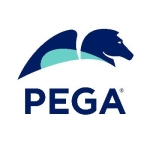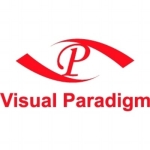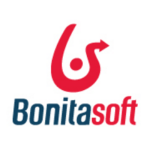What is our primary use case?
The primary use for the solution is as an enterprise architect tool, but in the start it was about processing; modeling all kind of business processes. And that was before I even mention BPMN. Today, we have switched to using BPMN to do all the different kinds of business process modeling.
This product is supporting it very well.
How has it helped my organization?
I'm now working as an independent consultant, but in the past, when I was using it we could really quickly get a picture of what kind of business processes were being used across the entire organization, and which could be reused, and be sure that no one else is doing it another way.
For example, the HR part, in that organization there were about 20,000 people working there. From an HR point of view, they had to do everything the same way, when they were hiring people, or when they were paying money, etc. There, we had a strong opportunity to define, describe, so that everybody could go in and see, "Okay, that's the way you have to do it. We have to follow these rules."
We could also create a good connection between the description of what we were doing the application. In this part, it was primarily SAP - and ARIS was coming from the SAP world in 1992, I think it was around then. They started as an independent firm, so they could do these things. That's why it's a very strong part, from when it started, but it has been developed now as an enterprise architect too.
What is most valuable?
The good thing about using this tool is the repository that gives us the opportunity: If you want to do modeling with the old notation form, ours was EPC, you can use the same object in the BPMN because the database is built in a way that you can use both things. So you only have to define it once, and if the notation form is BPMN and those kind of activities, you can use the same EPCs, so there is a connection between them. That is why it's a very flexible tool.
Furthermore, you can use this tool as an enterprise architect tool. So from an architectural point of view, when you're looking at the business area, you can find all the information you have to use as an architect.
The most important part of it, from my point of view - the way I work with it - is from an architect point of view. What I'm using it to handle, from the top-level management part, is where we talk about the strategy, then down to the business part, down to the information part, down to the application part, and to the technology part. So I use everything in the tool.
But, if you have to see it from a BPMN prospect, it will be the BPMN part of it.
Also, the UML parts have been improved very much in the last two years. And it's very powerful now to combine the BPMN and UML parts in the product, because you can make a connection between them, so that you have the right interoperability between them. So if you're doing data modeling, you can use your class diagram and bind that to the BPMN part. That's a very strong part of it too. Had now implementet the Danish public ad on "Plusprofil" to the UML packed.
What needs improvement?
I have been talking with developers for many years, and it was before using your UML class diagram and those things for defining data. One of the issues is, when you are defining databases, the way they use entities and relationship diagrams, the way we can define data, like data models, there is still a part they could improve. By using the UML part, you would use that instead of the old fashioned way of an entity and relationships diagram. But there they have a still point where they could improve.
For how long have I used the solution?
More than five years.
What do I think about the stability of the solution?
It is a very stable product. In all these years, I think once or twice in the beginning it gave me trouble, but never with stability. It's a very stable product. There are a very few bugs. When you find a bug, just give them a call or write to them and they will fix it. Today they are coming out with two major releases every year. They are really fast to go in and say, "Here is the update for that." So the stability is very good.
What do I think about the scalability of the solution?
It's also very good at scalability. If you follow what they are saying, how many users you should put on, etc., no problem.
The biggest challenge today is that people will not pay to have the right technology installation. For example, is there enough room for you at the network level to work with this product? In the new version where we can switch between the heavy one or the light one, the browser, there is no problem. It works. No problem.
How are customer service and technical support?
The level of technical support is very high. Very good.
Which solution did I use previously and why did I switch?
No, I didn't use a previous solution. If you ask me, if I have to choose between different kinds of solutions, I would prefer to use this. It is the most flexible and most user friendly product you can get. I would not switch. But, of course, when you are consulting, you also have to use other tools. Now, today, I'm also working with one of other tools, like HOPEX from MEGA. It's also one of the biggest tools that you can use. If I have to choose, I will choose ARIS instead of MEGA.
Of course, there are different things they can do, but I would still prefer to use ARIS. For the moment.
How was the initial setup?
Every tool, like these - with so many different things you can do with these tools - you need, of course, education about the tools, and you have to make choices. What part of it will you use? It is always like that. When you work with it during one or two days' education, I think you will be very capable of using it in the area that you would like to work in.
For example, if you are using it in BPMN, one day of education and you will already be one of the best people to model BPMN with this tool. Still, BPMN is a big area to go into. Start small but think big.
What's my experience with pricing, setup cost, and licensing?
You will never get a fixed price for this product because they will go in and ask you what kind of environment would you like to set up? How many people will you work with? How big is your organization?
Today, they have a fixed price to say, "Okay, just to start the business area, buy two licenses for modeling and eight people that can look into the product." They have this kind of fixed price. It's 50,000 Danish Krone. If you divided that by about six, then you get the pricing in dollars.
From my point of view, no, it is not cheap, but it is not too expensive because you get this big organization behind it, technical support, and all those things. It's not so expensive to use. It's a Rolls Royce in this field, I know that. Even for small organizations, they can get so much effect from using this tool, in a very fast way, so the money will be back in the customer's pocket very fast.
Still, when you are going out, negotiate and find the right price. You will never get a fixed price: "It costs this and, if you take ten of these, seven of these and eight of these, and then it costs this." No, you negotiate every time.
Which other solutions did I evaluate?
At that time, in 2002, it had to be connected to the SAP environment. The ARIS tool set at that time was one of the biggest in this area, and that's why we were choosing it. There was something else, but it was not as good. Not stable for the SAP environment. I think it was because of the SAP environment that we choose this product, not others.
Today, I would say, from an architectural point of view, it was a good choice. You will see that in the EU, they also use it in the customer area for defining BPMN processes and data. So, they are using this in the EU now as the main product for these areas.
What other advice do I have?
It is not a challenge to implement the product, not even from a technical point of view, because if you have rights to do things, it takes less than two hours to implement the whole package. Download the product and then just run it.
You have to go to the top-level people and talk to them and say, "Okay, what is your strategy to get a good view of your business?" If they say, "We would like to have something help us to manage, what kind of strategy that we have, what kind of rules, principles that we have to follow, that can give us a picture from the top-level and then traceability down to business areas."
For example, here in Europe, we have a new law called GDPR, data protection. That's coming in here in May, in the EU. This product can help you to be sure that you will not get in trouble when they come and ask you, "Have you completely made all these different kinds of process descriptions that show us where you are using, how you are using the data, etc?" Here you have a product that can support that.
If you want to have the full picture, also from an architectural point of view, then you should buy a product like this or something similar to this. You have to go up and find the best. ARIS is among the top in industry reviews, and I would recommend it. But I am also using one of the others up there as well.
Again: Where do you need it? That's a very important question to ask. Where do you want to put in? If it's in the BPMN area, use ARIS. It's a very easy way to use it.
Disclosure: I am a real user, and this review is based on my own experience and opinions.






















